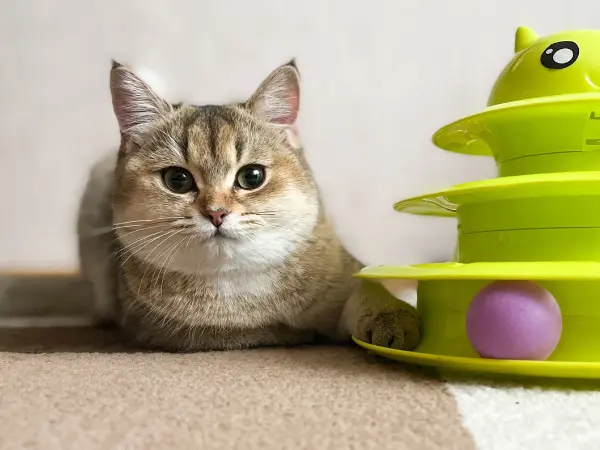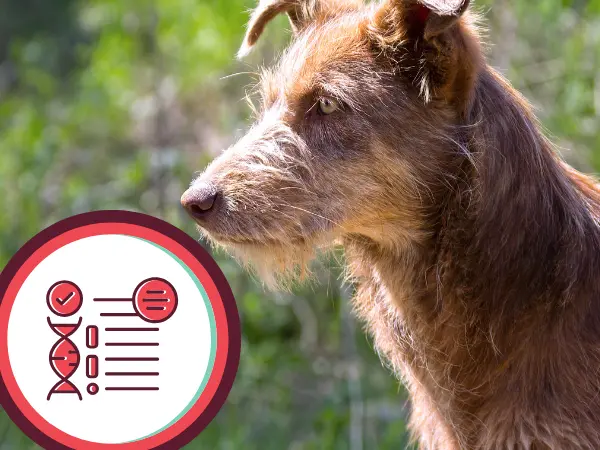Is your fur baby ignoring food, selectively eating what’s in their bowl, or just nibbling a small portion of their meal? If you’ve said yes to any of these, your fur baby is exhibiting picky eating. Whether this behavior surfaced overnight or has been going on for a while. ensuring proper nutrition for a picky eater dog or picky eater cat can be challenging.
However, understanding the potential reasons behind your fur baby’s selective eating habits and implementing expert tips can help you ensure that your furry friend gets the daily nutrients they need.
TL;DR
In this article, we cover essential points on picky eating behavior in dogs and cats — as well as actionable tips on addressing picky eating! Here is an overview, as featured in our @splootvets post. Read on to discover more!
Is It Normal for a Dog or Cat to Be a Picky Eater?
Having a picky eater dog or picky eater cat is a common struggle among pet parents. However, this type of behavior is typically not normal and can be tied to underlying causes — ranging from taste preferences to medical problems.

Why is My Dog or Cat a Picky Eater?
If you are struggling to get your picky eater dog or picky eater cat to eat, understanding the cause of their behavior is the first step. Here are the most common reasons why dogs and cats become picky eaters.
1. Medical Conditions & Dental Health Problems
Similar to people, underlying medical issues, such as dental problems, gastrointestinal disorders, or nausea, can make pets reluctant to eat. This is why reluctant or picky eating is one of the pet pain symptoms we covered in our guides: Signs of Cat Pain That Every Cat Parent Needs to Know and Signs That Your Dog May Be in Pain.
General pain and illness may decrease a dog or cat’s appetite altogether. Meanwhile, dental problems can cause a dog or cat to have a preference for types of food that do not aggravate their dental pain as much. Moreover, they might prefer to chew on only one side of their mouth.
2. Too Many Treats
Another common reason why dogs and cats become picky eaters is that they simply get too many treats throughout the day. When pets receive a substantial portion of their daily calories from treats or human food, they may become less inclined to eat their regular meals.
Although certain treats for dogs and treats for cats are healthy additions to their daily food intake, treats are NOT meant to replace regular meals nor take up more than 10% of a dog or cat’s diet.
3. Taste Preferences & Boredom
Dogs and cats, like humans, have taste preferences regarding specific flavors, aromas, and textures of food. Since each brand of pet food is different, some will be aligned with what your dog or cat prefers — and others won’t.
In addition, if your dog or cat has eaten the same wet food and dry food for a long period of time (>3 months), there is a chance they might get bored with the same textures, flavors, and aromas.

4. Food Allergies
Dogs and cats can be allergic to certain ingredients which are common pet food ingredients (e.g. beef, chicken, fish). Food allergies in dogs and cats manifest as excessive itching and/or gastric disturbances (e.g. diarrhea, vomiting). Over time, a pet’s allergies can contribute to their aversion to certain foods.
How to Get a Picky Dog or Picky Cat to Eat
The first step in helping a picky eater dog or picky eater cat is to rule out any possible, underlying medical causes. Once these are ruled out, the causes of picky eating in pets can be narrowed down to food preferences and feeding routines.
Here are the steps in managing picky eating behaviors in fur babies:
1. Rule Out Possible Medical Causes
If you have not yet consulted a veterinarian regarding your picky eater dog or picky eater cat, schedule an appointment today. A pet wellness exam and pet dental exam, conducted by an experienced veterinarian, will rule out the following possible causes of picky eating:
- Food allergies;
- Pain;
- Gastrointestinal problems; and
- Dental problems.
Note: In case food allergies or dietary intolerance is suspected to drive picky eating behaviors in pets, veterinarians at Sploot can facilitate diet trials for dogs and cats that will help rule out food allergies and dietary intolerance.

2. Other Tips For Feeding Picky Eaters
Once medical and dental issues have been ruled out, here are tips that pet parents can try to get their picky eater dog or picky eater cat to eat:
a. Watch the Treats
As mentioned earlier, some dogs and cats may develop a preference for treats and this could make them less inclined to eat their regular meals.
Pet parents can try reducing the amount of treats in between meal times to see if this helps their fur baby regain a healthy appetite. As a general rule, treats (and food toppers) should comprise no more than 10% of your fur baby’s diet.
b. Make Pet Meals More Enticing
If ruling out medical reasons and controlling treats does not have any effect on a picky eater dog or cat, pet parents can try to make pet meals more enticing by using food toppers or warming the food.
i. Use Food Toppers on Pet Food
Pet parents can try adding food toppers to make regular meals more interesting. Even just a few pet-safe toppers can boost the aroma, add texture, or give a welcome burst of flavor.
However, before using any food topper for dogs or cats, make sure to research its safety. Food items that may seem harmless to us could have adverse immediate or long-term effects on dogs and cats. Safe food toppers that you can try include:
- Boiled, unseasoned safe veggies
- Boiled, unseasoned chicken or low-sodium chicken broth (if chicken allergy is already ruled out).
- Canned wet dog food or wet cat food
Note: For more ideas on food that can be used as toppers, check out our guides:
→ Top 10 Healthiest Human Foods Dogs Can Eat
→ Top 10 Healthiest Human Foods Cats Can Eat
ii. Warming Up the Pet Food to Release Aromas
Another way to make pet food more enticing is to warm up the pet food (which releases the pet food’s aroma) before serving it to your fur baby. This technique works best for cats, but some pups may also respond to it.
As explained by Dr. Sylvia Berns, one of Sploot’s veterinarians, here’s the best way to warm up your pet’s food: “Warm up wet/canned food in the microwave for about 5-10 seconds [on a microwave-safe dish, removing the pet food’s original packaging]. Touch the food with the back of your hand first to make sure it is not too hot prior to giving it to your pet”
c. Try Another Brand of AAFCO-Approved Pet Food
If there is no underlying medical issue behind picky eating — and controlling treat amounts and using food toppers do little — the cause of food pickiness could be boredom. If this is the case, changing your pet’s food may help with boredom.
Note: AFFCO-approved pet food is widely recommended because the AAFCO (Association of American Feed Control Officials) sets the standard for optimal pet nutrition, based on decades of scientific studies.

d. Avoid Leaving Food Out
Though some pet parents may try to leave the pet food out in hopes that their pet would eventually find their appetite, this could have the opposite effect on some pets.
Sploot veterinarian, Dr. Berns, explains this further: “Another tip, especially for cats, is if they are not interested in eating the pet food we put down — and they don't go for it for 5-10 minutes — pick it up and try again later with fresh food. Sometimes when they are ill, or not wanting to eat the food, leaving it out or forcing them to eat can cause more aversion”
Final Thoughts on Picky Eating in Dogs & Cats
By ruling out underlying health issues, learning your pet's preferences, and following these expert tips, you can help your picky eater dog or picky eater cat develop healthier eating habits.
If you need a medical, nutritional, or behavioral consultation, Sploot Vets is always here to help.
Boost Your Pet’s Wellness & Save With SplootPack™
Vet Care is now easier than ever. With the SplootPack™ membership, you can save up to $600+ on essential veterinary care—available in Sploot’s Denver and Chicago vet clinics.
Get 3 waived wellness exams or check-ups, 10% OFF on all Sploot’s services, exclusive discounts, and more!
- Learn more - SplootPack™ Denver →
- Learn more - SplootPack™ Chicago →
Get All-in-One Vet Care at Sploot Vets
Sploot Veterinary Care provides all-in-one veterinary care, with primary care, urgent care, and emergency vet services all under one roof! We have multiple convenient locations in Denver, Chicago, and Colorado Springs. We offer daily appointment availability in all of our locations. Our doors are open for extended hours, 365 days a year.
Book an appointment easily online or through the Sploot Vets app! Till next time, we’re with you every pounce of the way!






